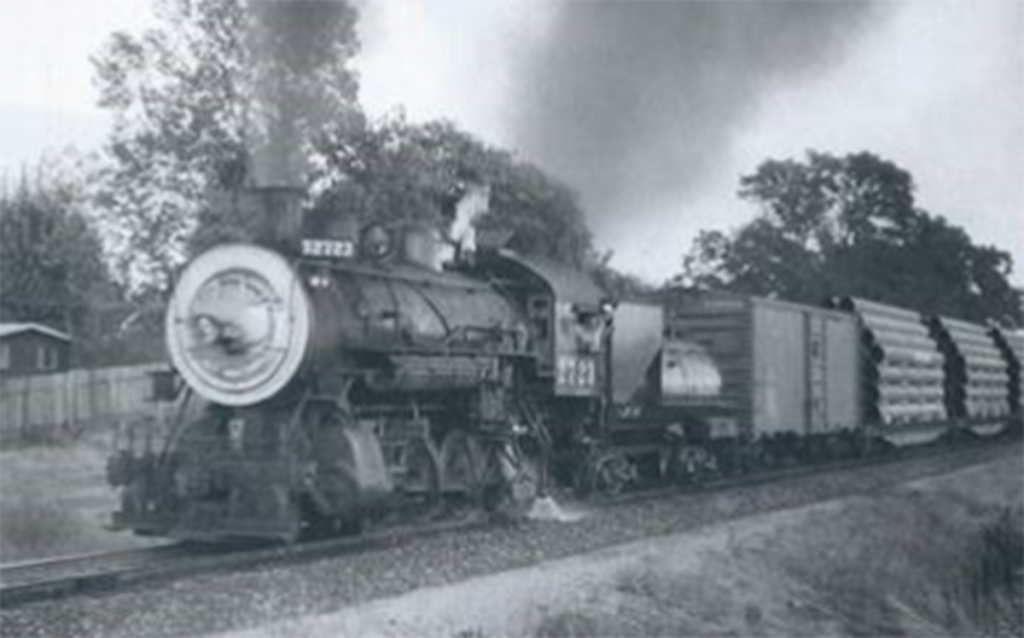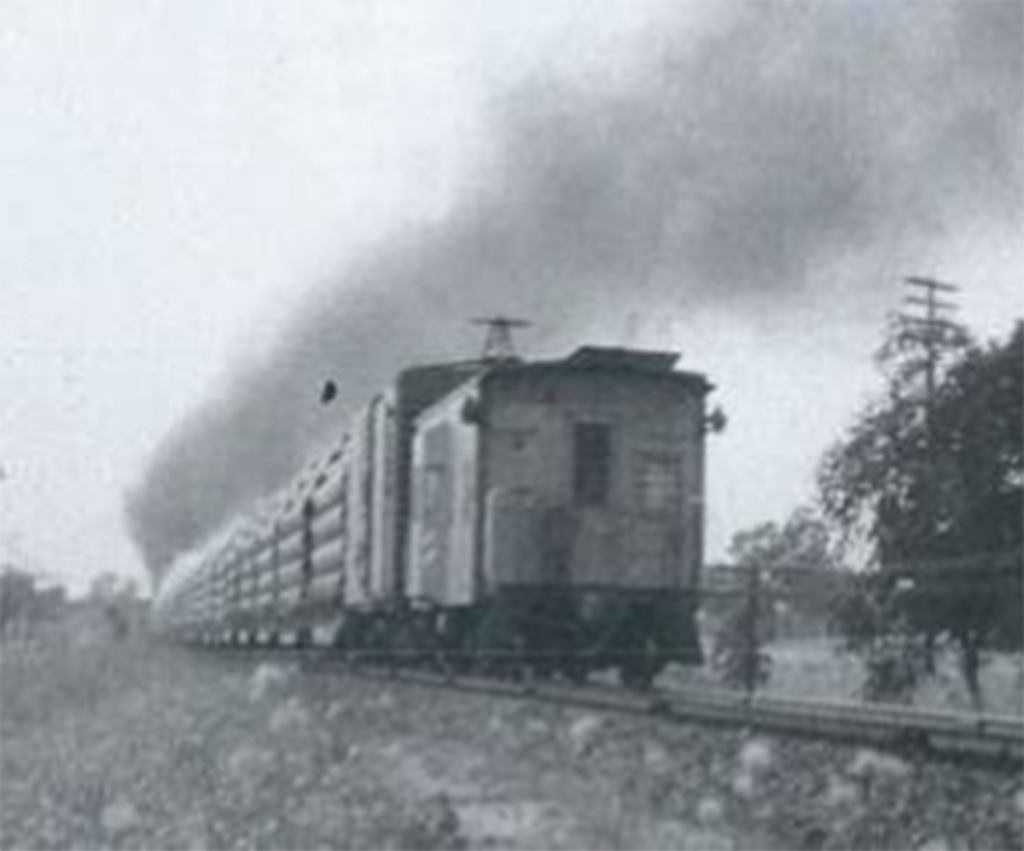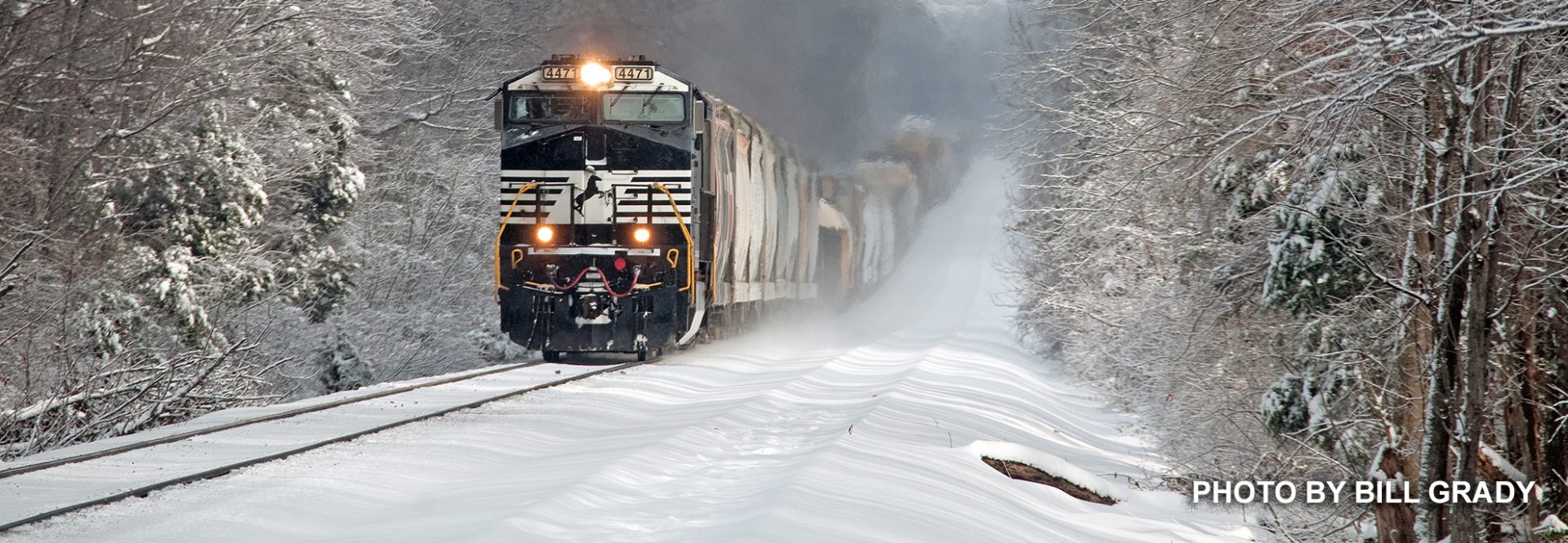
Twenty seven loads of “Big Inch” pipe from Kaiser Steel enroute to Wyoming.
So why the boxcars, fore and aft. Those empty cars are for crew protection in the event of a mishap along the way. Those heavy pipes would be like missiles in any kind of sudden stop. The buffer cars provide at least some level of personal protection.
This scene is just north of Sacramento very late in the steam era, September 1956. This Southern Pacific train will deliver the cargo to the Western Pacific at Marysville for onward shipment.
The use of buffer cars continues to this day. 100 plus car trains of crude oil, likewise lengthy trains of ethanol have buffer cars behind the power, you no longer see a caboose and the friendly wave from the crew. Buffer cars today are partially filled with sand to reduce the impact in the event of an accident.

The jury is still out as to the wisdom, efficiency, even the safety of shipping crude via rail or pipeline. My take is in favor of the rails, as the infrastructure allows flexibility in sources and destinations, on an existing transportation plant. No need to tear up the countryside and abuse the environment with underground pipe. Ethanol cannot be shipped via pipeline, so we’ll always that on the rails of barges.
Credits: photos by Richard E. Lohse as seen in Classic Trains – Spring 2018 Gary O. Ostlund
